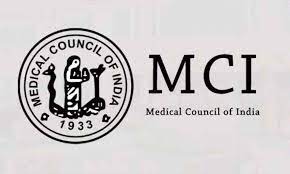12 Mar 2022 Indian medical education system

Indian medical education system – Today Current Affairs
- The crisis in Ukraine and the resulting evacuation of medical students, delays in post-graduate counselling due to reservation-related litigation and the state of Tamil Nadu enacting a law to exclude NEET exams in India The education system has attracted a lot of adverse attention.
- There is a need to look into what is lacking in the system and what adequate measures need to be taken to deal with the situation.
Today Current Affairs
Problems of Medical Education in India
- Demand-supply imbalance: A serious problem with respect to population parameters is the demand-supply imbalance. The cost of these seats in private colleges ranges between Rs 15-30 lakh per year (not including hostel expenses and study material).
- This amount is more than what most Indians can afford. It is difficult to comment on quality as there is no fixed criterion. However it is highly variable and unfavourable in most medical colleges despite the private-public divide.
- Issue of Skilled Faculty/Faculty: Government’s initiative to open new medical colleges is seriously affected by the shortage of faculty/faculty. Except at the lowest level, where new entrants come, the teachers of the existing medical college are recruited by the new colleges at all other levels. Academic quality remains a serious concern.
- The Medical Council of India (MCI) tried to plug the many loopholes of the former faculty and corruption in the past. This has introduced the necessary ‘publications’ for promotion to improve the academic rigor of the faculty but has resulted in a glut of journals of dubious quality.
- Low doctor-patient ratio: India has one government doctor per 11,528 people and one nurse per 483 people, far below the 1:1000 recommended by the World Health Organisation.
- Old Curriculum and Teaching Style: New dimensions are being established in the medical field, but the medical studies curriculum in India is not updated accordingly.
- Lack of social accountability: Indian medical students do not receive training that provides them with social accountability as health practitioners.
- Problems with private medical colleges: Law changes in the 1990s made it easier to open private schools, and many medical institutions emerged in the country, financed by businessmen and politicians who had no experience running medical schools. This commercialized medical education to a great extent.
- Corruption in Medical Education: Fraudulent practices and rampant corruption like fake-degrees, bribes and donations, proxy faculty etc. is a big problem in the medical education system.
Improvement: The Hindu Analysis
- There is a dire need to revisit the existing guidelines for setting up medical schools and allowing for the correct number of seats.
- Giving teaching privileges to practicing practitioners and allowing e-learning tools will bridge the gap of quality teachers across the system. Also, these reforms can double the existing medical seats without compromising on the quality of teaching.
- Periodic recertification based on continuing learning systems may be necessary to keep up with the rapid pace of change.
- Students need to improve their basic management, communication and leadership skills.
- They need to be trained keeping in view their social relevance as doctors.
- There is a need for integration of subjects in the classroom, use of new teaching methods and more prevalent technology.
- There is a need to work on medical research and clinical skills in colleges.
Steps to be taken: The Hindu Analysis
- Increase in seats: Several institutions have proposed to increase seats by converting district hospitals into medical colleges using the private-public partnership model. NITI Aayog is moving in this direction.
- However, the government needs to strengthen a functional regulatory framework and a proper public-private model that meets the needs of the private sector as well as the country before implementing these ideas.
- We have failed miserably mainly because of the politico-private sector nexus.
- Controlling College Fees: Recent efforts by the National Medical Council (NMC) to regulate college fees are being opposed by medical colleges. The government should also seriously consider subsidizing medical education in the private sector or alternative ways of funding medical education for underprivileged students.
- Regular quality assessment: The quality assessment of medical colleges should be done regularly, with reports made available in the public domain. NMC is conducting a common examination for all medical graduates as a quality control measure.
- Changes in Occupational Health Education: Today’s medical education should be able to produce professionals who are in line with the medical system of the 21st century.
- The Lancet report ‘Health Professionals for a New Century: Transforming Health Education to Stronger Health Systems in an Interdependent World’ (2010) outlines key recommendations for changes in health professional or vocational education that need to be addressed.
- There is a need to change the system to meet the growing shortage of health professionals to serve the aging population with lifestyle and life-long diseases, apart from raising the standards of medical professionals.


No Comments